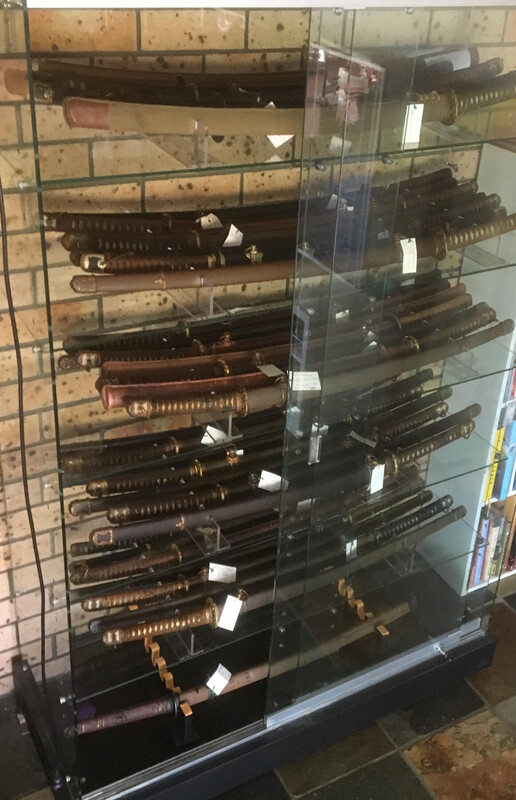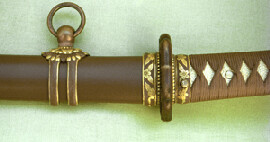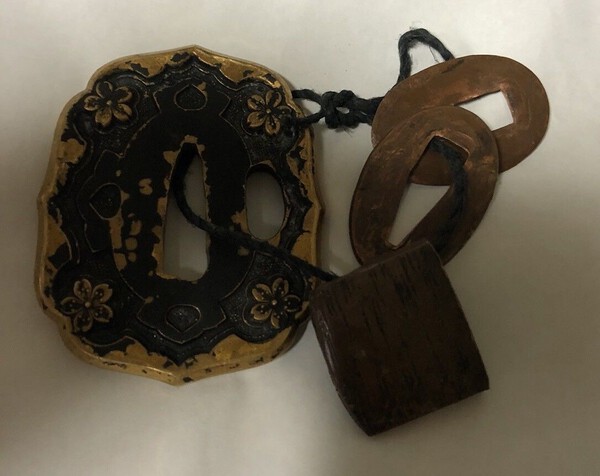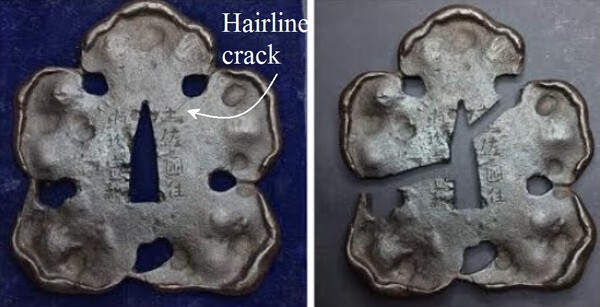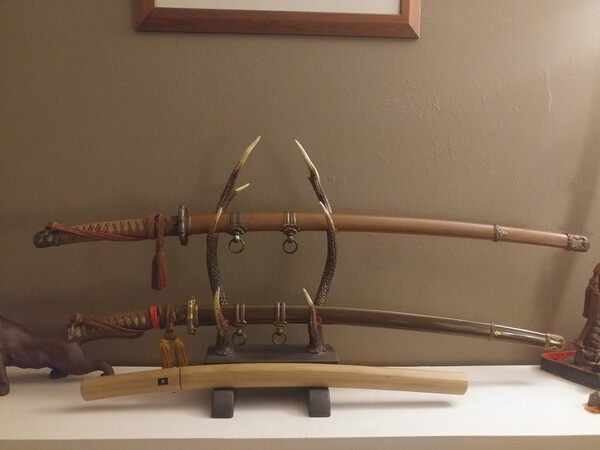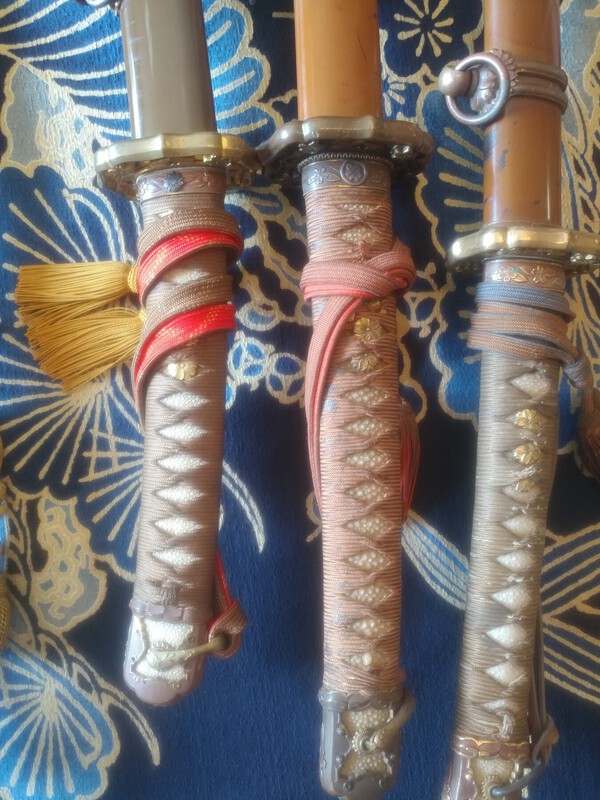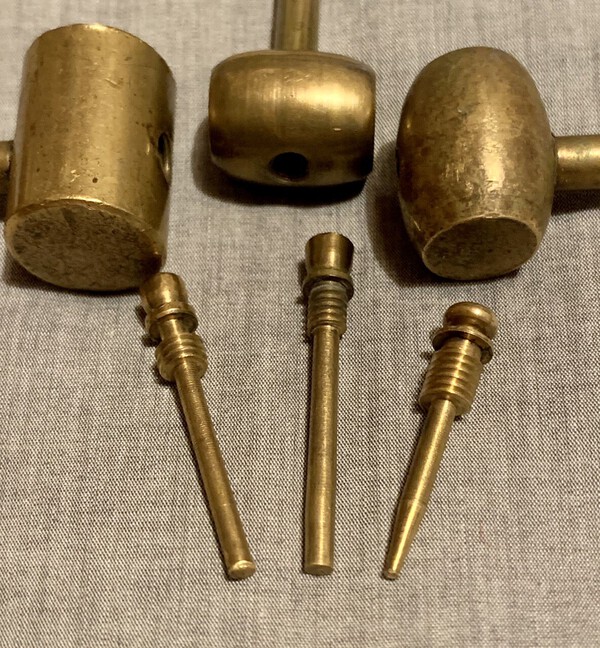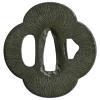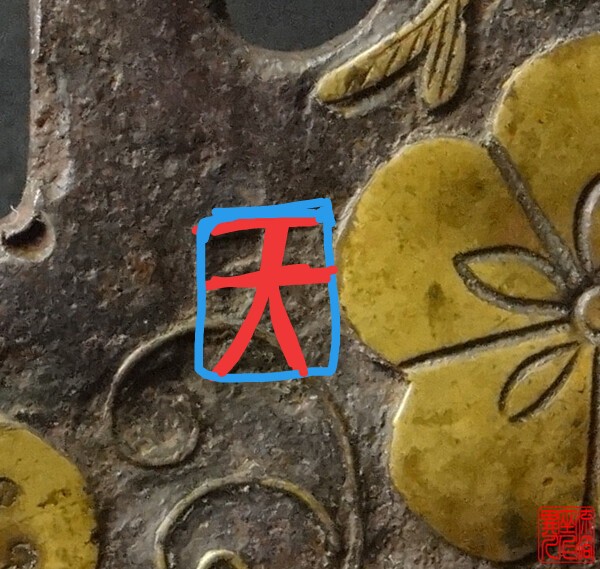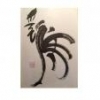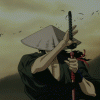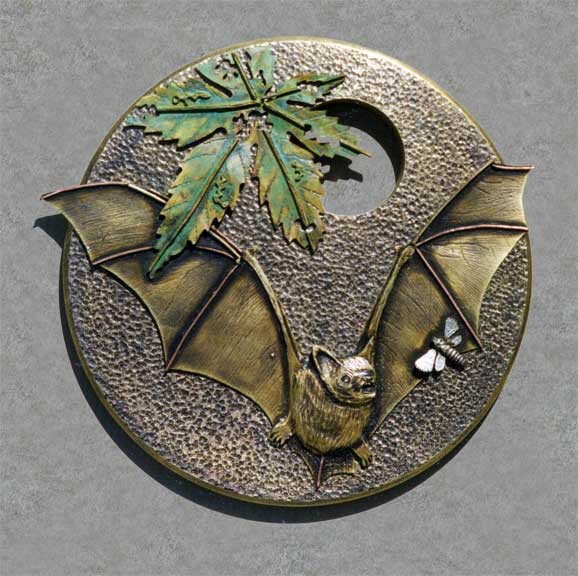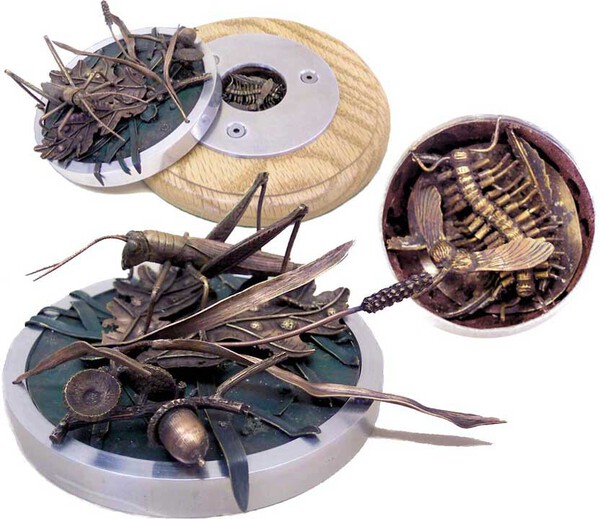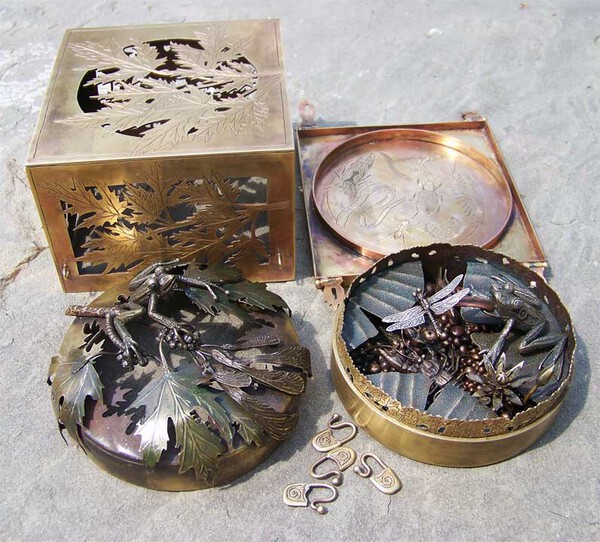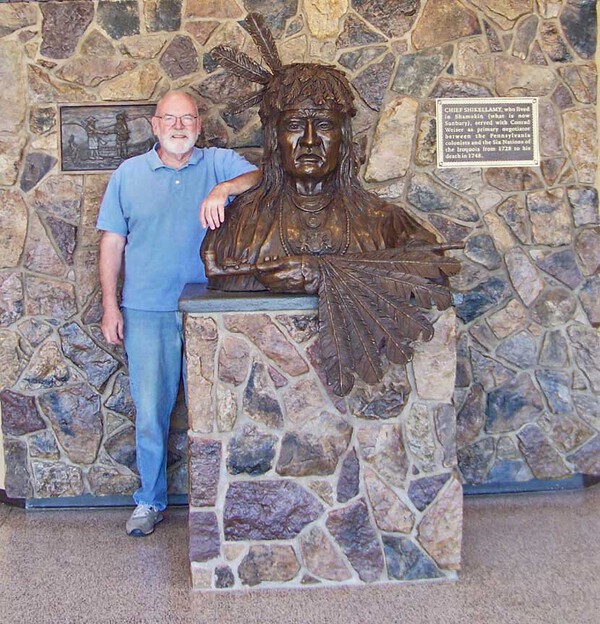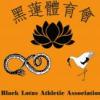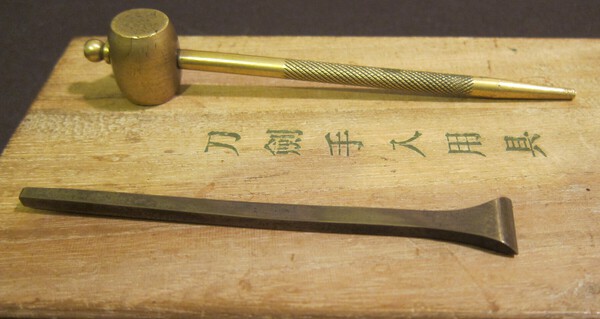Leaderboard
Popular Content
Showing content with the highest reputation on 11/22/2020 in all areas
-
4 points
-
3 points
-
Is it sold? https://www.aoijapan.com/katana-soji-chikuzen-daijo-taikai-naotane-kao/ Best2 points
-
https://www.aoijapan.com/koshirae-hijikata-toshizos-shinsen-gumi-koshirae/ this fine Koshirae will never achieve Juyo but due to History its price is far above a classical tanto koshirae Juyo.2 points
-
I have to say that you guys sure have some classy gunto. In 50 years I have not had a Type 34 in hand and some of you have lots of them...maybe Neil's collection explains why...almost none of them in Australia? Well speaking of 50 years...here is something that is trivial / of no importance, but is mildly interesting to us gunto nerds (hope this is OK here) ...here is the only gunto sword mount I have seen with this shape hanger top ('dome' head instead of 'ball' head). No big deal, but are there any more out there? It is on the saya of a gendaito blade by SHIGEKUNI...unknown smith, 2 character signature, no date. Good blade with silver habaki, and mon (now missing).Maybe this hanger is from a particular private mounting shop and if a couple more turn up on signed blades I will get an idea of where my SHIGEKUNI was made/mounted? Regards edit to add another trivial question...the sword was owned by 2/lt. KUME of the 32 Div. 2nd Army in Halmahera DEI. There is only 2 ways to write the name KUME...I can't find mon for these two KUME in my books...does anyone know?...might be 2 of them? ,2 points
-
Thanks for the compliments, feels like home if people here are happy with me and not envious of what I had stumbled upon like it happened elsewhere. I'm myself highly looking forward to post pictures of the blade once I have it back! And Tom Darling, no worries, there are not plans from my side to sell it - I'm keen myself to hold it in hands. Yes, Darcy is aware of this blade, in fact he even contacted me when I originally had posted here. He also offered to do the work, but since that would had meant that I'd had to consign the blade finally with him for sale, I decided to use someone else. Despite following recommendations by more experienced persons than myself I prefer to always have full control over it, plus I would never let myself get in the situation to be forced to part with something.2 points
-
2 points
-
A friends film won best documentary “My documentary 'The Art of Imono' gets nominated for 3 top categories at the Shorties Film Festival: Update: Won Best Documentary! You can watch it here: http://vimeo.com/edwinlee/imono1 point
-
Hi Matt, Here is a care and handling brochure that will tell you how to remove and replace the handle. Please read it through before you attempt anything. http://nbthk-ab.org/cleaning-maintenance.php Cheers, Grey1 point
-
1 point
-
You guys are amazing. I look at a WWII koshirae and do not see what you see. It reminds me of the time I was on a field trip and the prof kept on pointing out things that I never saw until he pointed them out. I was amazed then and I'm amazed now. Keep up the good work. You could make of book from the information that all of you have provided. Get together and do it. I'll be happy to buy a copy - seriously do it.1 point
-
My impression is that someone swapped out or lost the original tsuba. Everything else is carefully understated quality and en suite, but the tsuba is one I have seen many times. Unless it had some wartime or special secret society meaning, it doesn't feel like it correctly belongs to the rest.1 point
-
On some early/high grade Type 94/98 the Tsuba was covered in a lacquer or paint over the original gilding. Unfortunately today it's almost impossible to find examples retaining this original lacquer intact, on Dr Jinsoo Kims site there are a few original examples; the only ones I have been able to find. If anyone has a sword with this lacquer coating remaining please share, along with the blade/smith. Even if it's just a small amount remaining in the corners, in fact some collectors may discover these remnants if they looks closely. This lacquer seems more prevalent on Yasukuni-To and other early high grade Gendaito.1 point
-
1 point
-
Dale, don't get me wrong, I'm absolutely in agreement with the assessment that these are crap cast fakes. I was just pointing out that the photo posted showing an apparent break seemed to be a photoshop job, based on the exact shadow positioning. This particular tsuba and it's many cast copies has been thoroughly discussed on this forum previously. There's a link above to a pretty definitive thread on it from 2011.1 point
-
"Arm" is also a term used to mean "the whole piece", "the entire weapon, lock, stock and barrel". Eg., "He was armed to the teeth" meaning he carried a variety of weapons. My reading at the time was that he thought the pistol itself was modern??? BaZZa.1 point
-
1 point
-
無銘 江戸前期 加州兼若 Mumei early Edo (Kashū Kanewaka) The rest is too fuzzy to see, Mike.1 point
-
Ford I believe either the first image before the break already showed a hairline crack. - - or the first image is just the two pieces pushed back together and thus shows the 'before' image after it was already broken. I have seen a number of these rather fragile guards broken into two , three or more pieces almost as if they were made of glass, some even set up for sale, with plenty of glue in evidence from hasty and in my opinion useless repair. Broken or not there are so many of these out there for sale that I can only feel sad that anyone would/has paid more than a few dollars for them. They are in their own way worth about the same as any of the fake Chinese alloy decorations that resemble tsuba - because they aren't tsuba.1 point
-
Jeff, I am not sure if you have a shinogi (Ridge), it looks like hira-zukuri, flat on each side? and the mekuni-ana is quite old. Kindly take a better pic of the point area, and other side of blade. I would call it a ko-wakizashi at 14 inches with goma-bashi . The sword is very very interesting, and definitely have it polished, excellent candidate for shinsa. Take a couple more pic of the nakago without the habaki. It could be fat on one side. Cheers. Tom D.1 point
-
1 point
-
Sold for $4250 + 18% premium. Not bad, given there was no provenance it's still a good piece.1 point
-
Thanks Piers. (I was imagining the handle unscrewing from the head, which doesn’t make any sense.)1 point
-
Hi Jeff, Feel free to call with questions before you attempt any repair, or questions in general. Mean time, here is a care and handling brochure you should read: http://nbthk-ab.org/cleaning-maintenance.php Cheers, Grey 218-726-03951 point
-
Richard, normally a push with the long prod will dislodge a mekugi, but occasionally it will not move under a simple pushing force, so you will need to hammer the end of the hammer, (well, gently tap the hammer to get movement). Rather than having to use two hammers, you can remove the 'drift' pin, place the tip against the mekugi peg, and tap that with the hammer to dislodge the mekugi. Yesterday I had to remove the pins of a long gun and they were so small that I chose a mekugi-nuki hammer with an internal more-pointed drift. Not to put too fine a point upon it...1 point
-
So far, I have run across two different double-edged blade shapes used by Kanemasa 兼正. I think yours is called a "kissaki moroha zukuri" 鋒両刃造 and it is based upon the Kogarasu Maru (小烏丸). Four of the fourteen Kanemasa swords have this blade shape. Ohmura-sensei disagrees and calls it a "mukade-giri-maru" 蜈蚣切丸. Below is a link to a PDF that shows the "mukade-giri-maru" at the Ise Shrine and it can be seen in frame 2. Any thoughts about this dilemma welcomed. http://museum.isejingu.or.jp/docs/cms_event/o65yx90q/展示作品.pdf Kanemasa 兼正 also used one other double-edged blade shape and it can be seen in Edward's sword in post 14. I do not know what this style is called but it does show up at least twice. Here is the translations for your sword. 明治廿六年十二月一日 = 1893-12-01 (01 December 1893). 村田刀兼正 = Murata-sword Kanemasa.1 point
-
Ive got a Gendaito Yasuhiro. A Bizen Osafune Norimitsu, a Koto Sukehiro, and the rest are unsigned Koto. Shinto or Shinshinto pieces. The kai Gunto on the far right has some traits of a Shinto Osaka school and has a perfect polish, I’m hoping to get it papered if sword shows are back by next year wish I could afford more but military pay is what it is, i have to be pretty selective on what I buy. Just picked up this Koto Bizen in a Kai Gunto from Mike Yamasaki which I’m very happy with. On that display, I am putting to full use to all the bucks I’ve shot over the years !1 point
-
Tim, I wouldn't call that humble, more like a museum display! What swordsmiths are in the collection?1 point
-
I thought this blade might be of some interest to collectors of Gunto and Showato. It is a 43" (Nagasa!) O-tachi by Hikosaburo Akihide. It must be among his first swords made when he was only 18 years old. He made it to comerate his brothers safe return from the war. Akihide was a pivotal figure in the Japanese Sword world leading up to and including the war years. He trained many smiths, and facilitated the production of many of the swords we have in our collections. Anyway, this beast is now in the capable hands of Mr. Benson (It should give him a good workout). If possible I'll bring it to Chicago and /or post photos when I get it back. Jim M.1 point
-
JP i go with you. The blade looks something we see from a well known seller on ebay. The signature is a little strange. But i think it is a good sword for practice. I'm not really convinced too that it is a real showa-to. For the price. It is up to you what you asking for. The Koshirae looks new with older Habaki, Seppa and Tsuba.1 point
-
DONT waist any money changing things. Keep it as history put it to where it is. Save that money youd spend on it to another sword to what you want. My .50 cents... inflation don't you see1 point
-
1 point
-
1 point
-
Probably made as a traditional blade for a shin-gunto then, and since remounted in Buke-Zukuri mounts. Nice one to have.1 point
-
Ha, I find it quite annoying that life keeps getting in the way of my hobby time! What’s your serial number on that one? Is it close to Neil’s?1 point
-
I was sent this image taken from facebook (face-ache) from S. King in Western Australia - he knows my pet peeve about these things - it would be funny, but I don't suppose the owner got it cheap enough to see the funny side. [Supa Glue work on cast iron?] There is always a replacement available https://www.jauce.com/auction/o439044478 one almost every week in fact!1 point
-
Bushu ju yamamoto genki toshinaga think the other side is truly forged/folded 15 times1 point
-
This is a nice topic and they are most enjoyable items shown. Lots of character. I will throw in a modern "mekugi pocker" made by Kimura Kanemitsu of Akamatsu Taro Tanrenjo in Kumamoto. With handmade bag. The saying "ichi go ichi e" means something like "always treat someone you meet as though its the first time, as it may be the last". Mal1 point
-
Thanks Mr. Hallam—off it goes to Mr. Benson for submission in the January kodogu shinsa. Will post results!1 point
-
1 point
-
1 point
-
I joined this wonderful site a while back and never properly introduced myself. I am a sculptor who has worked as a silver and gold smith, operated a bronze casting foundry where I cast my own sculpture and competed for sculpture commissions. I also worked as a freelance artist making prototypes for the toy industry. I worked for Cotswold Collectibles making metal prototype guns, swords, armor and anything else they needed for their line of twelve-inch G.I. Joe figures. The prototypes were created by handcrafting dozens and sometimes a hundred or so individual pieces of brass that were brazed and silver soldered together to form the final object. The prototypes would then be sent to China where a pantograph machining system would create injection molds to produce the final plastic toy. I also taught art at a High School for 38 years. Now I make one-of-a-kind medals using the same techniques used to make the toy prototypes. These pieces are small intimate medallic sculptures which are a combination of many different colored and textured metals. Many of my medals are fabricated from a hundred or more individually crafted pieces of bronze, copper, silver, shakudo, white and yellow gold’s. The medallic sculptures are patinated in many different colors to reflect nature. They offer a suggestion of a biome rather than simply a replica of individual plants and animals. “I create a format of an outer composition encapsulating a hidden inner one. The subjects are a frozen moment in the natural world.” Much of the inspiration for these pieces are Japanese mixed metal sword furniture and tobacco pouch clasps. Dick1 point
-
I think, what this, very detailed, discussion has established without any doubt is; most sword swingers know diddly squat about metallurgy, nor indeed, Japanese swords. Most dojo dwellers gain their "expertise" from DVD's and the sempai/kohai relationship is not very conducive to critical thinking , is it? In any case, the so called, "experience" of part time hobbyists is hardly relevant when compared to 1000 years of tradition based on the empirical, life and death, judgements of professional fighting men. Regards, Ford my tongue is sharper than my sword, but only just1 point
-
A more pertinent discussion about a blades robustness would be the question of nioi or nie-deki. As far as I can see mokume and itame hada are rarely found independent of one another. Sometimes it is easier to describe a sword as one or the other even though there is some of the other mixed in, never mind the parameters. Another good question would be; what makes one smith o-wazamono while another isn't when they both use similar sword-smithing techniques? Better steel, better yakire, what? Isn't that what counts in evaluating a sword for cutting? John1 point
-
This interesting topic just came up as I had just re-discovered a hidden away brass tool / implement (shown here with my mekugi nuki) I was given so many years ago I can't remember from whom or what it is called or what its exact purpose is. As you can see I have not used/handled it...is it Japanese sword related (I think so), maybe a scraper...or? Be interested to know.0 points
-
0 points





